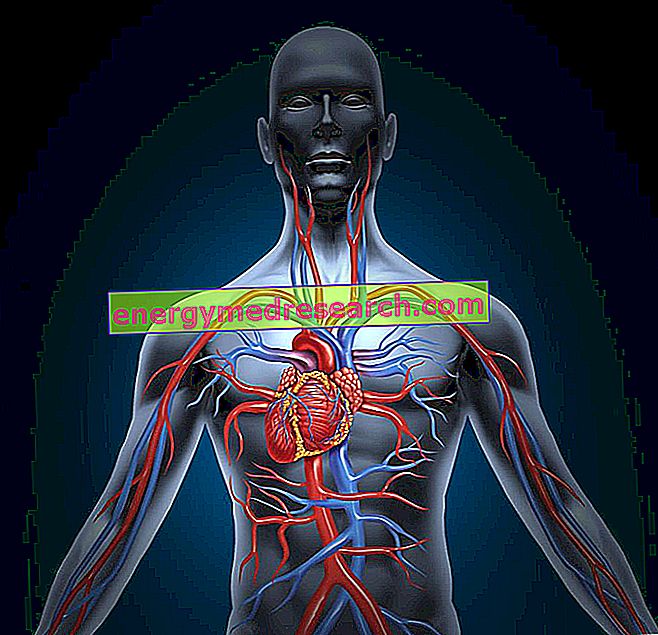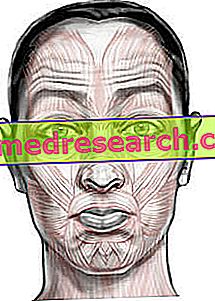Key points
Ecchymosis is an extravasation of blood in a tissue, the result of a blunt trauma able to damage the walls of blood vessels, without interrupting the integuments.
Ecchymosis: causes
The most frequent ecchymoses are induced by traumas or minor-to-moderate contusions. In addition to these elements, ecchymoses may result in alterations in blood coagulation (hemophilia, leukemia, thrombocytopenia), some diseases (phlebitis, lupus, scurvy) and anticoagulant therapies.
Ecchymosis: symptoms
The main symptom of ecchymosis is pain, whose intensity depends on the severity of the bruise inflicted. Pain is often associated with swelling and perception of local heat.
Ecchymosis: signs
Cromia → The color scheme of the ecchymosis varies over time: red (immediately after the lesion), blue / violet (after 4-6 days) and yellow green (after 7-10 days).
Size → bruising does not have a definite shape. In general, the diameter of the ecchymosis is between 1 and 2 cm
Ecchymosis: cures
A mild bruise does not require any specific treatment. Ice packs can speed healing times.
Definition
By definition, ecchymosis is an extravasation of blood in a tissue, expression of a contusion able to break the walls of blood vessels, without however interrupting the integuments (skin). Severe ecchymoses, characterized by a copious accumulation of blood in a tissue, dress with the most important pathological significance: in such circumstances, ecchymosis is precisely defined as a hematoma.
Ecchymosis can be found directly on the skin, or involve a mucous membrane. Similarly to the proper hematoma, traumas and bruises are not the only triggering elements of ecchymosis: alterations in the coagulation capacity of the blood, leukemia and anticoagulant therapies can in fact cause similar bruises.
Causes
The most frequent bruises are the result of a violent action, exerted by an object on the skin.
Similar injuries can be produced in different ways:
- Compression: blood vessels undergo a crushing tear
- Decompression: the suction induces the capillaries to a burst, which occurs by external decompression
- Traction: the ducts of the blood circulation are stretched, up to tearing
- Pressure imbalance: typical of physical effort. Some sports practices (eg weight lifting) require an exaggerated physical effort: the blood pressure increases, so the capillaries tend to break. Also the asphyxiated convulsions (characterized by a temporary respiratory incapacity), the seizures and the pertussis retching can favor a pressure imbalance, up to form ecchymoses
Bumps, blows, bruises or minor-medium entity traumas are the typical causes of ecchymosis; however, as mentioned in the beginning, the violent action of an object on the skin is not the only possible cause.
Risk factors
ALTERATIONS TO THE COAGULATIVE HUMATIC CAPACITY combine to develop ecchymoses. In this sense, the most recurrent pathologies are:
- Hemophilia: marked tendency to bleed. The coagulative incapacity of the blood that characterizes hemophilia (hereditary disease) is an expression of a total or partial insufficiency of the so-called factor VIII or factors IX. The lack or absence of these fundamental factors for coagulation predisposes the patient to ecchymoses.
- Thrombocytopenia (or thrombocytopenia): this is a clinical condition characterized by a reduction in blood platelets (<150, 000 units per mm3 of blood). Platelets play a cardinal role in the regulation of haemostasis, therefore they intervene in the blood coagulation process. A reduction in the platelet count can predispose the subject to bleeding, ecchymoses, petechiae and hematomas.
- Leukemia (blood cancer): the reduction in the number of circulating platelets - a distinctive feature of leukemia - can cause bleeding from the nose (epitaxis), major bleeding after minor abrasion, intestinal bleeding, cutaneous bleeding and ecchymoses or enormous hematomas.
Other DISEASES predisposing to the ecchymosis have also been identified:
- phlebitis (inflammation of surface veins)
- Systemic lupus erythematosus (infrequent)
- scurvy: a serious deficiency of Vitamin C. Scurvy also predisposes a subject to the formation of ecchymoses. In this pathology, the tendency to haemorrhage and the formation of petechiae and ecchymoses are the result of the high permeability of blood vessels. Let us briefly recall that ascorbic acid is essential for the formation of connective tissue, whose function is to provide elasticity and strength to the vessel wall; the fragility of the connective greatly increases the permeability of blood vessels, therefore the risk of bleeding.
Even anticoagulant therapies - therefore the intake of drugs such as coumadin, heparin and dicumarol - can predispose the patient to the formation of ecchymoses, regardless of a bump or a bruise.
Symptoms
To learn more: Ecchymosis symptoms
As analyzed, ecchymosis often originates from traumas or contusions of more or less serious entity. The main symptom of ecchymosis is therefore the local PAIN, perceived at the point where the lesion occurred. The intensity of pain is clearly subjective, and is proportional to the violence with which the bruise was inflicted. More than actual "pain", most patients with ecchymoses complain of tingling or tension at the level of the injured part. The tenderness increases by exerting pressure on the ecchymosis; often, this symptom is associated with local edema - ie swelling - and perception of heat.
Signs and characteristics
CROMIA
The color scheme of the ecchymosis varies over time: as the lesion is reabsorbed, different colored shades can be seen on the surface of the skin. Initially, the bruise appears reddish-blue; after 4-6 days, the hue of the ecchymosis fades to green. After a week or ten days, the bruise fades, until it takes on a golden-yellow appearance.
Following a limited trauma, the local red blood cells are phagocytosed and degraded by macrophages. The alteration of the color of ecchymosis is an expression of the enzymatic conversion of hemoglobin to bilirubin.
The chromatic variations of the ecchymoses over time are very useful clues to chronologically place the violent bruising action. A red bruise indicates a trauma suffered from a few hours, while a yellowish bruise denotes a healing bruise.
DIMENSIONS AND SHAPE
Generally, ecchymoses do not have a definite shape. However, to distinguish them from milder lesions - petechiae and purpura - it has been established that the diameter of the ecchymosis must exceed at least one centimeter. Compare with hematomas, the ecchymoses are smaller (the bruise does not exceed 2 cm) and are generally less severe: often, the ecchymoses extend to the point of being confused with a hematoma, creating real ecchymotic masks.
It is not rare that the ecchymosis reproduces on the skin the blunt instrument or the object that originated it: in this case, the lesion assumes the connotation of "figurative ecchymosis".
LOCATION
In general, bruising occurs at the point where a bruise occurred. However, some variants of ecchymoses appear further away: just think of eyelid bruises in the context of fractures of the base of the skull.
At other times, the ecchymoses are the only external sign of profound compromises, even of extreme gravity.
Care
Minor ecchymoses tend to self-purify within a few days: the bleeding is slowly reabsorbed, disappearing completely after a short period of time. To speed up healing time, it is advisable to apply ice bags to the trauma: the vasoconstrictor effect of the cold (cryotherapy), limits the leakage of blood from the traumatized vessels. In addition to this property, ice gives a good anesthetic effect, temporarily masking the pain.
In the case of gravity (ecchymotic masks), it is possible either to take anti-inflammatory drugs orally, or to apply locally - directly on the surface of the ecchymosis - analgesic ointments.
When the lesion is the result of alterations in blood coagulation capacity, it is necessary to go back to the cause that induced the ecchymosis, and to intervene accordingly.



